|
I received an email on January 22, asking whether the anti-war
protests on January 18 2003 might have had any detectable effects on the
Global Consciousness Project network.
Date: Wed, 22 Jan 2003 23:37:11 -0500 (EST)
Subject: Any results from the anti-war protests?
Dear Roger,
I'm writing to check in with the project to see if there were any
measured shifts in global consciousness on January 18th as a result of
the parallel anti-war protests around the world. I'de really love to
know. I was in Washington and felt like there was a resonance in other
parts of the globe.
Thanks,
Ashley Young
I said I would be happy to explore this, but that it
would be valuable to make a specific, formal prediction.
I requested a beginning time and ending time for a period that
contained or defined the major gatherings, according to Ashley's feeling
for the times that seemed appropriate.
The news services indicated the protest gathering started at 11 am in
Washington, and gave no exact time for end, but it looked to be around
3:30 or 4:00 pm. Ashley sent a note on the 23rd confirming the whole
timespan was
11:00 to 4:00-ish, and specifying that "the times that I think would be
most appropriate would probably be between 1:30 PM and 3:30 PM on
Saturday the 18th." This is the period when the
"consciousness of the anti-war protesters was most heightened ..."
The formal specification was established as 1:30 to 3:30 PM
(18:30 to 20:30 GMT),
standard analysis, seconds resolution. Subsidiary analyses were planned
as informal explorations of effects on individual eggs, and at other
locations and times.
The first following figure shows the full network of 50 eggs, during the
specified period. It has a Chisquare of 7366.7 on 7200 df, and
corresponding p-value of 0.083.
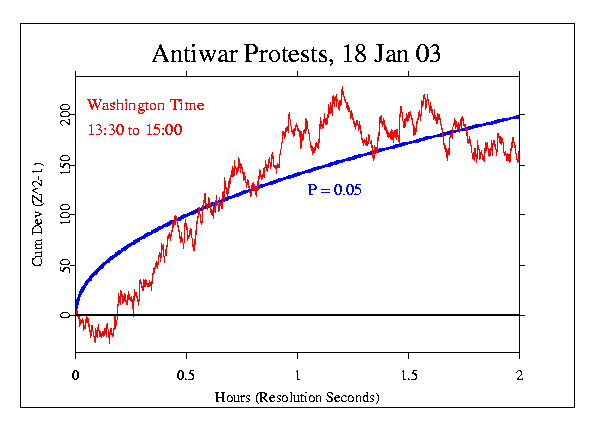
The next figure provides a little context, in which it appears that
Ashley's feeling about the "appropriate time" does contain the most
prominent steady trend during the whole period.
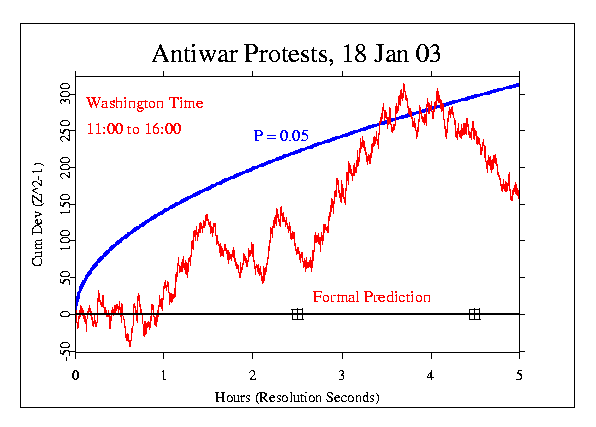
We have lately been looking at the behavior of individual eggs, and
beginning to ask whether those closer to the focusing event, in either
spatial distance or relevance may show stronger effects. The next two
graphs show our egg in Durham, NC, and two eggs in Princeton, NJ,
respectively, during the formal analysis period. Their patterns
are interesting, showing some extreme trends over 15-20 minute periods,
but there is no clear indication of larger effects overall.
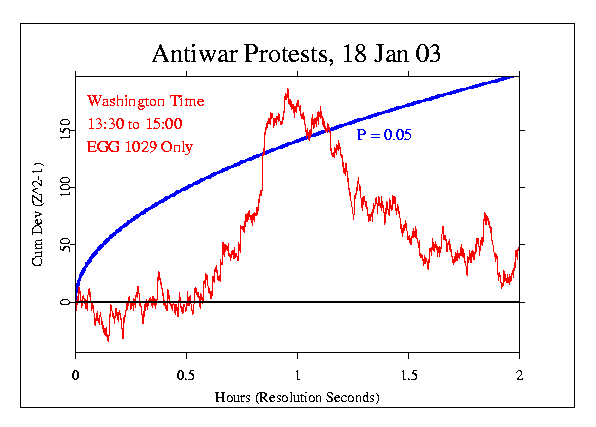
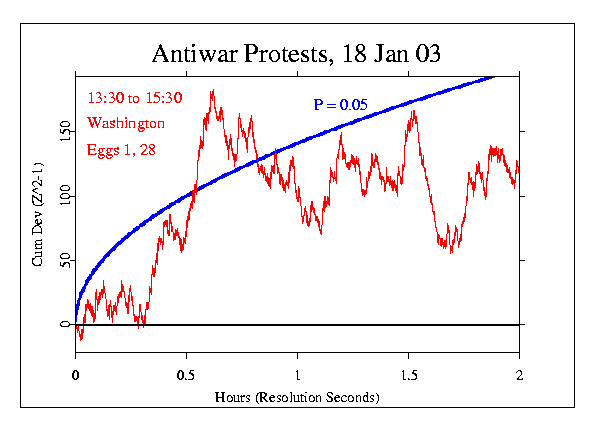
Finally, the last figure shows the period from 11:00 to 16:00 San
Francisco time. This has a striking trend, going in the opposite
direction from our standard prediction. Interesting, but interpretation
is difficult.
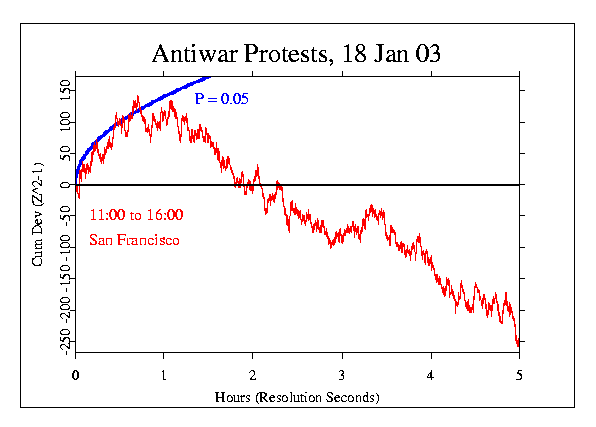
|